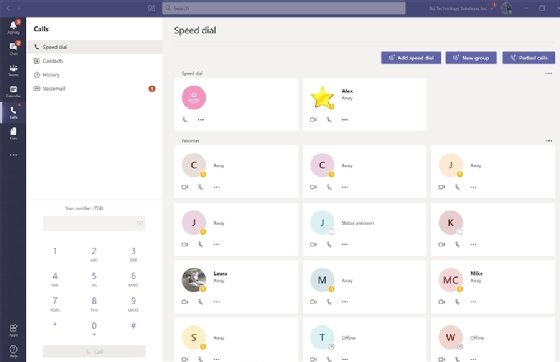
Davidoff777 - Fotolia
Microsoft Teams partners extend phone system capabilities
While the Microsoft Teams phone system can meet most needs for organizations, connecting Teams to third-party partners can provide additional features, resiliency and support.
Microsoft Teams calling has grown exponentially since the beginning of the COVID-19 pandemic as many organizations relied on the platform for internal peer-to-peer calls and meetings. Now, some of those organizations are considering making Teams their primary phone system.
Teams could be an enterprise-grade PBX as it meets requirements for emergency calling, voicemail, auto attendant and interactive voice response needs, said Kevin Kieller, co-founder of Microsoft consulting firm EnableUC. But, for some organizations, a third-party communications provider can take the Teams phone system even further.
Kieller and other industry insiders spoke at an Enterprise Connect virtual summit on the Microsoft Teams phone system and why organizations should consider a third-party provider to complement the platform.
Microsoft Teams partners boost telephony features
While Teams offers enterprise-grade PBX capabilities, some organizations may have specific requirements that Microsoft can't meet. For those organizations, a third-party communications provider can bridge the gap, Kieller said.
Because Microsoft's customer base is so large, it makes sense to offer the most basic phone services to meet the majority of customer needs, said Alex Gruber, vice president of product management at Vonage. But some organizations may need a specialized provider to gain communications capabilities, such as text messaging, fax and sentiment analysis. Vonage integrates with Microsoft Teams through Direct Routing, which enables organizations to use Vonage's cloud-based telephony infrastructure with Teams.
Connecting the Teams phone system to a third-party provider can also improve resiliency and disaster recovery. For example, earlier this year, an Azure Active Directory outage prevented users from logging into Teams or accessing some telephony features. In that case, third-party providers could help.
While Microsoft Teams has a service-level agreement that promises three-nines availability, the phone system itself does not have an SLA, Kieller said.
"This is a great point where your PSTN [public switched telephone network], Direct Routing or SIP [Session Initiation Protocol] provider can play a significant role," he said. In the event of an outage, organizations could rely on their third-party provider and maintain Teams phone system continuity.
Organizations planning a remote or hybrid workplace scenario also need to evaluate whether the Teams phone system can meet all their communications needs, Gruber said. They need to examine their current and future PBX needs, whether they should migrate to a cloud-based PBX and if they have the IT resources to address future needs.
Using a Microsoft Teams partner for telephony also offers other benefits, such as offloading phone system management to the provider and connecting to contact centers and other business applications, Kieller said.

Operator Connect for Teams phone system
Microsoft currently offers two options to connect the Teams phone system to PSTN: Calling Plan and Direct Routing. With Calling Plan, Microsoft is the sole carrier for the Teams phone system. Direct Routing, on the other hand, enables organizations to continue using their carrier with Teams.
A third option is currently in development called Operator Connect, which is a telecom operator-managed service. Microsoft announced Operator Connect at its Ignite conference earlier this year.
With Operator Connect, organizations can choose from an approved list of telecom operators within the Teams admin portal, connect their calling services, assign phone numbers to users and deploy the service in minutes, said Mattia Tocco, principal program manager for Microsoft Teams.
Call control is managed in the cloud, which means organizations do not need to buy additional infrastructure. Session border controllers, for example, are provided and managed by the operator, Tocco said.
Organizations that already have contracts with approved Operator Connect providers will be able to continue those contracts. The providers currently approved for Operator Connect include Verizon, BT, Orange Business Services and Intrado.
To be part of Operator Connect, operators must meet certain requirements for factors like SLAs and support models, he said. Microsoft plans to open Operator Connect to private preview later in the second quarter.
Teams customers don't need to commit to a specific service for PSTN access -- they can have a mix, Tocco said. A multinational company, for example, could use Calling Plan for phone systems in one country, while using Operator Connect in another.






